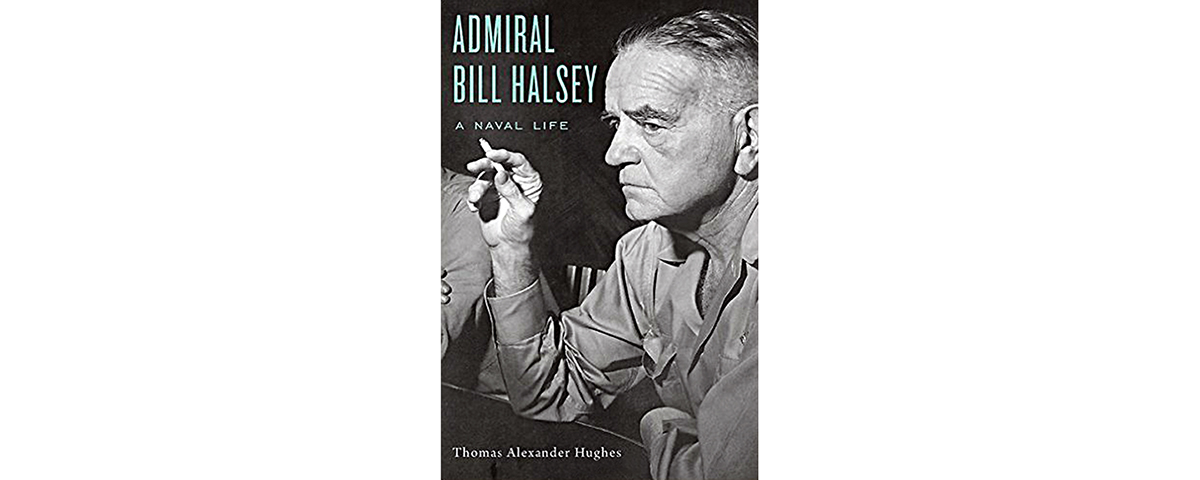Admiral Bill Halsey: A Naval Life, by Thomas Alexander Hughes, Harvard University Press, Cambridge, Mass., 2016, $35
In many ways American Admiral William F. “Bull” Halsey Jr. was the naval equivalent of Army General George S. Patton Jr. Both were larger-than-life and supremely successful, albeit flawed, combat commanders during World War II who have received short shrift and harsh treatment at the hands of many postwar historians and biographers. Of the two Patton seems to have fared better, despite his eccentricities and controversies. Halsey, however, has suffered in comparison to such contemporaries as Admirals Chester Nimitz, Marc Mitscher and Raymond Spruance.
The reason for that historical oversight centers largely on events in the closing year of the war, when Halsey’s aggressive and impetuous nature prompted several costly judgment errors. Perhaps his worst blunder occurred during the Battle of Leyte Gulf, during which the Japanese seem to have read Halsey’s character perfectly when they dispatched four almost empty aircraft carriers to the northern tip of Luzon in order to lure Halsey away from their true objective, the landing site of the American invasion of the Philippines far to the south off Leyte. The carriers proved irresistible to Halsey, and while he did achieve a lopsided victory off Cape Engaño, he left the landing beaches off Leyte vulnerable to attack from two other powerful Japanese naval formations. That Halsey’s blunder didn’t spell disaster for the U.S. invasion force is a tribute to the courage of the overmatched naval forces that remained off Leyte—and a measure of sheer luck.
The Battle of Leyte Gulf, and the damage inflicted on the U.S. Third Fleet by a typhoon soon afterward, were errors from which Halsey’s reputation has never fully recovered. Hughes’ new biography, however, shows there was a great deal more to Halsey’s story than the unfortunate events of 1944. The very aggressiveness that proved his Achilles’ heel late in the war was among the principal reasons for his stunning success earlier in the war, as the crippled U.S. Navy desperately fought its way back from the brink of defeat. Halsey, more than anyone else, was responsible for turning around the tactical situation in the Solomon Islands, resulting in the first successful Allied offensive campaign against Japan.
While Halsey is remembered principally as an exponent of carrier tactics, he actually spent some 20 years as a destroyer commander. Indeed, he was among the captains in the U.S. Navy flotilla that initially developed destroyer tactics. When he became a carrier skipper, Halsey brought with him the hard-charging approach and tactical adaptability he had learned in destroyers, even insisting on learning to fly and becoming the fleet’s oldest qualified naval aviator.
It was Halsey’s aggressiveness and adaptability to new forms of warfare that brought him success through much of the war. Only in the last year, when confronted with the command of unprecedentedly large and far-flung fleets, did he exceed the limits of his ability. This new biography presents a fascinating reappraisal of one of the most important, yet subsequently neglected, military commanders of World War II.
—Robert Guttman





